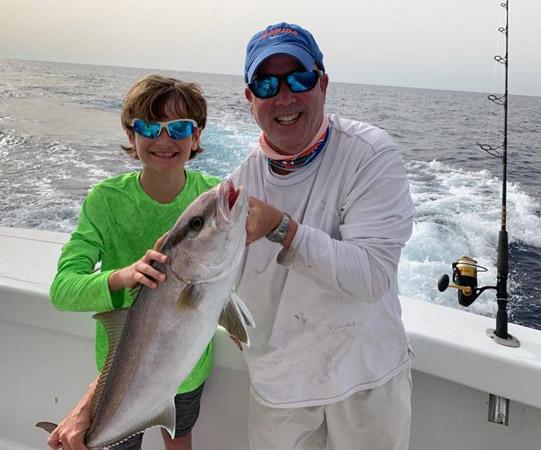Council Exploring Options to Reduce Release Mortality and a Holistic Approach to Management of Snapper Grouper Species

December 15, 2021 – Members of the South Atlantic Fishery Management Council are beginning to explore ways to reduce the number of fish that are released in the Snapper Grouper Management Complex and improve survival rates for those fish that are released. The multi-species complex includes 55 species of snappers, groupers, porgies, grunts, and amberjacks. “We simply have to get a handle on these regulatory discards,” explained Council Chair Mel Bell during the Council’s meeting last week in Beaufort, North Carolina. “Fishermen also play a key role in improving the survival rate for released fish and ultimately determining the future of the fishery.” The Council has consistently encouraged the use of Best Fishing Practices including a descending device requirement and hook modifications for snapper grouper fishermen in federal waters in place since July 15, 2020.
According to the latest stock assessment for Red Snapper, discard mortality (the number of fish that are released and die) accounts for 90% of the overall fishing mortality, primarily from the recreational fishery as anglers continue to fish year-round for other snapper grouper species. Large numbers of discards affect managers’ ability to prevent overfishing while also reducing the number of fish that can be kept and landed by the fishery. The Council’s Scientific and Statistical Committee determined the Red Snapper stock continues to be overfished and undergoing overfishing largely due to discard mortality, and in September provided the Council a total Acceptable Biological Catch (ABC) for Red Snapper of 25,000 pounds. Under law, the Council may not set an annual catch limit that exceeds that ABC, leaving little room for an opening of the fishery when the updated ABC is implemented. However, given that the majority of Red Snapper mortality is due to discarded fish, the Council recognizes that reducing discard losses is necessary to prevent overfishing and could possibly increase the amount of fish available to harvest.
The Council is moving forward with a Release Mortality Reduction Framework Amendment to address the Red Snapper ABC recommendation while looking at possible ways to reduce release mortality and end overfishing. After reviewing input from its Snapper Grouper Advisory Panel, Council members discussed ideas for reducing the number of fish that are released and increasing survivorship of released fish, including: restricting access to specific areas (spatial or depth) where Red Snapper congregate; gear modifications such as requirements for single hooks, leader lengths, and lines per person; daily weight limits of per person; and seasonal openings. “The Council has a legal mandate to end overfishing and address the Acceptable Biological Catch level from its SSC,” said Jessica McCawley, Chair of the Council’s Snapper Grouper Committee. “We know some of these ideas may be of concern to fishermen and certainly welcome input as we consider things such as regional differences or sector differences in this fishery. One size may not fit all.”
The Council will begin soliciting public input and suggestions for how to best reduce the number of released fish and improve release mortality in early 2022 and discussions will continue during its March 2022 meeting in Jekyll Island, Georgia.
Over the last year the Council has been investigating recreational permits or licenses for the Snapper Grouper fishery as a tool to help identify the universe of fishermen and improve data collection. The Council will receive a final report from a Recreational Reporting Workgroup during its March 2022 meeting.
The Council is also considering a holistic approach to managing the Snapper Grouper fishery and approved the use of a Management Strategy Evaluation (MSE) to robustly evaluate management impacts across the fishery. The Council intends to use the MSE to evaluate varying strategies to achieve management objectives to rebuild overfished stocks and prevent overfishing, while balancing the needs for fishery access, resource use, and accommodating sector and geographical differences in the fishery. Updates on the MSE will be provided to the Council as the project gets underway.
Other Business
The Council approved Amendment 32 to the Coastal Migratory Pelagics Fishery Management Plan with actions affecting Gulf Migratory Group Cobia, including the Florida East Coast Zone. The fishery is managed jointly by the Gulf of Mexico Fishery Management Council and the South Atlantic Fishery Management Council. A recent stock assessment for Gulf Migratory Group Cobia indicates the stock is not overfished but is undergoing overfishing. Actions in the amendment include a reduction in the daily possession limit from 2 fish to 1 fish per person per day with a vessel limit of two fish per trip. The reductions would apply to both recreational and commercial sectors. The amendment would also increase the minimum size limit to 36 inches fork length for the Florida East Coast Zone. Amendment 32 must be approved by the Secretary of Commerce before measures are implemented.